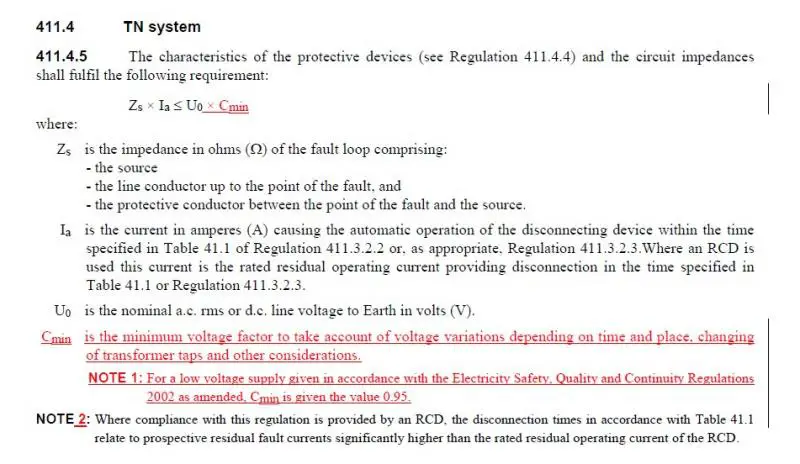John, I was merely trying to encourage you to make a formal comment about the apparent inconsistency in the value chosen for Cmin. Explaining where you found it to EFLI is interesting perhaps to the two of you, but will not result in a change to the draft of BS7671 unless someone else makes the comment as a result of your posting. I have asked one of the members of the JPEL for their comments on the choice of 0,95 for Cmin.
Fair enough. I'm pleased to hear that you feel the question is worth asking. It occurs to me that the reason why the proposal 'does not make sense' to me could be the result of a misunderstanding on my part, so maybe you or someone else (westie?) could clear this up for me?
As you will realise, my 'surprise' is based on my understanding that a UK electricity supply is ‘permitted’ (by whom?) to be as low as 230V - 6%, namely 216.2V. The proposed new Note 1 to 411.4.5 indicates that, for LV supplies “in accordance with ESQCR (2002, as amended)”, minimum Zs values should be calculated from U
0 x 0.95 - i.e. 230V -5%, namely 218.5V. This almost implies that ESQCR imposes a minimum supply voltage of 230V - 5% (i.e. 218.5V), rather than 230V - 6% (i.e. 216.2V).
Can you (or someone) possibly clarify exactly what regulations say what about the minimum supply voltage in the UK? I really need to be clear about that before I can comment on the DPC without potentially making a fool of myself!
I thought you'd have interpreted my earlier remark as expressing the possibility that a late comment would be accepted. Some BSI Secretaries will accept late comments, others won't. I'm not a member of JPEL/64 so I don't know their Secretary, and I don't know the dates of their meetings.
Fair enough - I'll have a go (if/when my mind is clear about 'permitted minimum supply voltages' etc.). As you've said, there is nothing to lose. The frustrating thing, of course, is that they almost certainly won't act on my 'proposal', yet will provide me with no feedback regarding the rationale behind their proposal of Cmin=0.95. Maybe you will get a better understanding of their thinking from your JPEL colleague - in which case I would obviously be very interested if you were able to share that with us.
Kind Regards, John


